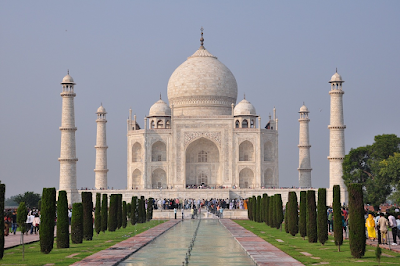The Taj Mahal stands as an epitome of love, architecture, and historical significance. It is an ivory-white marble mausoleum, set against the backdrop of the Yamuna River in Agra, India and has been designated as a UNESCO World Heritage Site since 1983.
The Taj Mahal was built by the Mughal emperor Shah Jahan in memory of his beloved wife Mumtaz Mahal, who died in 1631 during childbirth. The construction of the Taj Mahal was carried out over a period of 22 years, employing thousands of artisans and craftsmen from across the empire.
The Taj Mahal's architectural brilliance is unparalleled, combining elements of Persian, Turkish, and Indian design. Its central dome, standing at 73 meters tall, is surrounded by four smaller domes, creating a mesmerizing symmetry. The intricate inlay work on the marble, using semi-precious stones like lapis lazuli, turquoise, and jade, showcases the craftsmanship of the artisans.
The Taj Mahal is not just a mausoleum; it is a complex of grand buildings set within a vast Mughal garden. The main courtyard is flanked by the mosque on one side and the guesthouse on the other, creating a serene ambiance. The garden, with its reflecting pools and manicured lawns, enhances the overall beauty of the complex.
The Taj Mahal's significance extends beyond its architectural beauty. It is a symbol of eternal love, a testament to the Mughal emperor's devotion to his wife. The intricate details and the sheer scale of the monument make it a masterpiece of Mughal art and craftsmanship, captivating visitors from around the world.

